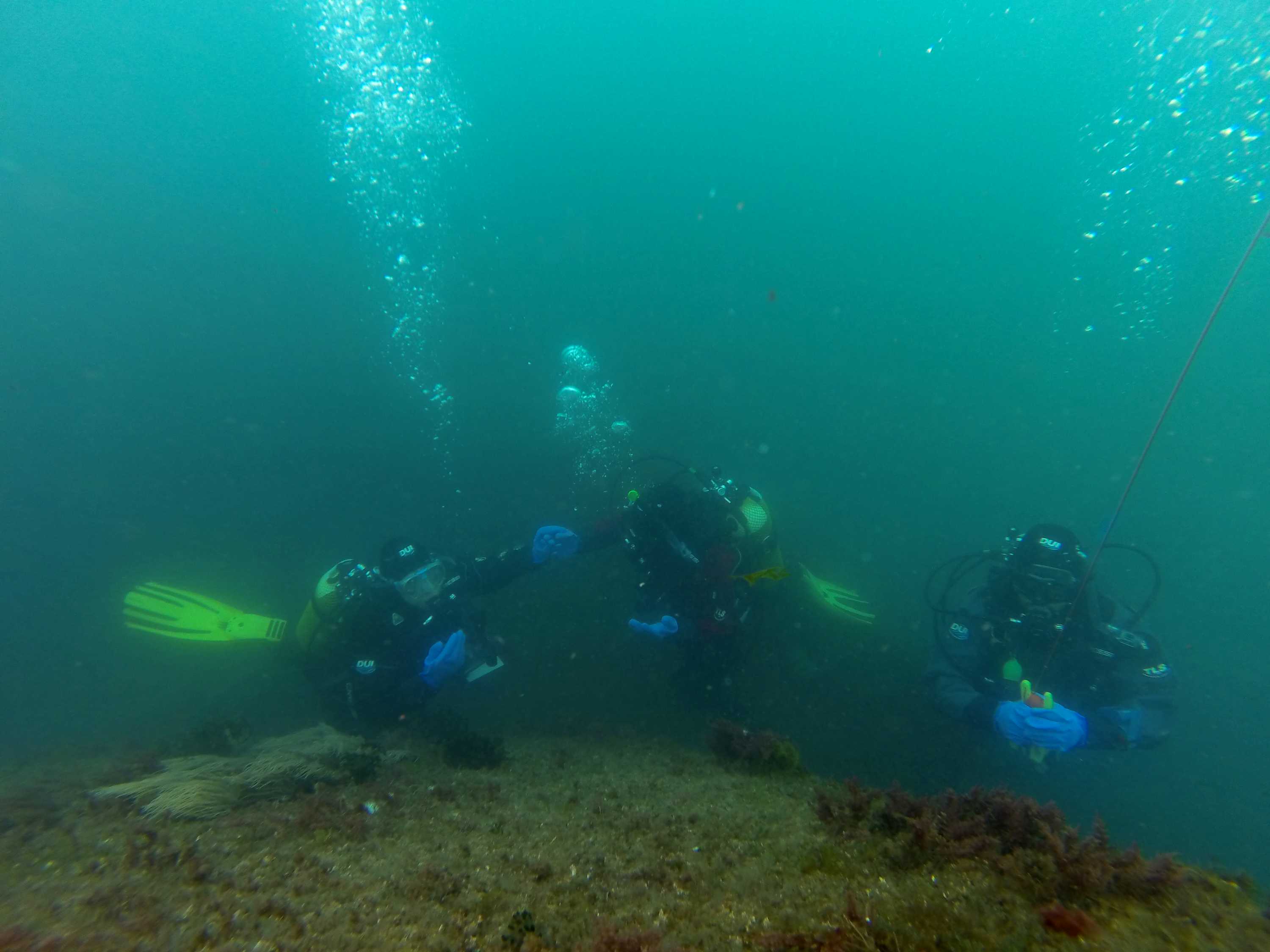Antartica Next expedition (University of Barcelona and Centro Oceanográfico de Gijón)
The diving is organized by the DISTANTCOM project involved the Gijón Oceanographic Centre (IEO) and is led by researcher Conxita Avila UB and member of IRBio.
To carry its objectives, researchers must collect their samples by diving techniques using dry suits adapted to withstand water temperatures up -1,8ºC and then conduct experiments in laboratories Oceanographic Ship Hesperides and the Spanish Antarctic Base Gabriel Castilla located on Deception Island.
Participating in the training setting in cold six scientists (Conxita Avila, Juan Moles, Oriol Sacristan, Carlos Leiva (UB), Patricia Alvarez (UAM) and Javier Cristobo (IEO)) that will develop research activities in Antarctic waters in the waters during the next southern summer. The reason for choosing the city of Gijon due to logistical issues first as the director of the Oceanographic Center, Javier Cristobo participates in the project, murky issues existing in the white continent atmosphere to the cold waters, moved and on the other hand to the facilities found in the center of Marina Diving Immersion O2 Yachts in the marina of El Musel.
The DISTANTCOM project (Diversity and Antarctic benthic community structure) whose main objective is to try to understand the diversity and structure of Antarctic marine benthic communities. To do this, they studied the ecological activity of natural products of marine benthic organisms (those in contact with the bottom) by experiments of chemical ecology in situ.
Locally, studying trophic relationships, symbiosis and bioaccumulation in shallow Antarctic benthic communities. Therefore DISTANTCOM the three objectives of the project are:
1) Set the phylogenetic history influences the current biodiversity and population structure in Antarctic marine invertebrates.
2) Determine how trophic relationships, symbiotic and bioaccumulation of contaminants contribute to or affect the current structure of marine benthic communities shallow; and
3) Describe the chemical interactions between marine benthos through experiments in situ (including toxicity, repellence and anti coating activity), identify natural products involved and assess their potential medicinal use in humans in collaboration with the two collaborating companies project.
More information: Javier Cristobo, Centro Oceanográfico de Gijón 985309780
